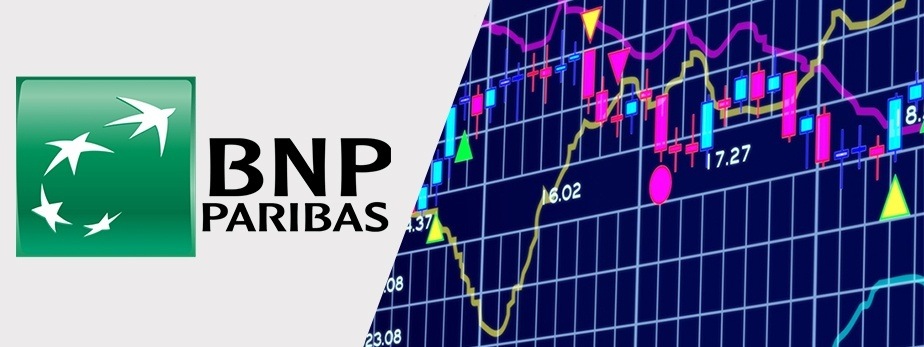Contents:

All the points above demonstrate the bar graph vs histogram in a clear manner. But with histogram, this cannot be done, as they are shown in the sequences of classes. The bar in a histogram is a graphical depiction of quantitative data sets, grouped under a certain parameter. The count of data points in each range is shown on the Y-Axis. Thus, with the help of data grouping, we can check the count of data points in each data range, and the pictorial representation is easier to understand and analyze.

Histograms showcase a large number of data and the frequency of data. And the distribution can be determined by a histogram. Procedure of drawing a histogram differ when class-intervals are unequal in comparison to equal class-intervals in a frequency table. In the case of equal class-intervals, no adjustment is made. In this case, the width of the rectangles would be of equal width, whereas the length of the rectangles would be different in proportion to the frequencies of the class-intervals.
The pictorial representation of data is more intuitive to the human mind and easier to grasp. The different types of bar graphs are vertical bar graphs, grouped bar graphs, horizontal bar graphs, and stacked bar graphs. In contrast, a histogram typically has adjacent bars, with no spacing between them, to represent the continuous nature of the data. The bars in a histogram represent the frequency or relative frequency of data within each interval, with the height of each bar indicating the quantity of data within that interval.
Bar Charts
The data in a bar graph is represented by rectangular bars that are spaced apart, with each bar representing a separate category or group. In contrast, the data in a histogram is represented by adjacent bars that represent the frequency or relative frequency of data within each interval. A typical bar graph shows numeric variables arranged at equal class intervals. These graphs are represented with the help of an x-axis and a y-axis. Each part of a bar graph displays frequencies of the different values of a variable or other distinct values.
Mass spectrometry imaging to explore molecular heterogeneity in … – pnas.org
Mass spectrometry imaging to explore molecular heterogeneity in ….
Posted: Mon, 11 Jul 2022 07:00:00 GMT [source]
In bar graph data is represented in only vertical bars. A bar graph is used to show comparison amongst different categories and may consist of two or more parallel, vertical or horizontal bars. The fundamental difference between histogram and bar graph is the aspect of visual representation. It can be defined as a set of rectangles with bases along with the intervals between class boundaries and with areas proportional to frequencies in the corresponding classes. In such representations, all the rectangles are adjacent since the base covers the intervals between class boundaries.
Data Science Skills to Master
Bar graphs charts provide a visual presentation of categorical data. Categorical data is a grouping of data into discrete groups, such as months of the year, age group, shoe sizes, and animals. In a column bar chart, the categories appear along the horizontal axis; the height of the bar corresponds to the value of each category.

what differentiates histogram from a bar chart graphs can be easily manipulated to display false information because they are easy to represent. This type of bar graph is also known as a composite bar graph. It is because it divides the total value into different parts. A graph is a pictorial representation of any data used to analyze, calculate, and define numerous outputs. A Probability Histogram shows a pictorial representation of a discrete probability distribution. It consists of a rectangle centered on every value of x, and the area of each rectangle is proportional to the probability of the corresponding value.
These categories are best suited to be represented by a bar graph. A bar graph sometimes does not close the cause, patterns, effects, and other aspects of statistical data. Bar graphs have a distinct domain of divisions that are done by scaling all the data to fit in a graph.
Pictorial Histogram
Because every value is stacked in a stacked bar graph, specific labels are needed to show them apart. Histograms are one way of graphically representing a grouped data; that is, histograms represent continuous data. Bar graphs and histograms both use “bars” to represent the given data. The vertical axis of the bar chart should consist of numbers to determine the length of the bar chart and also the number of equal intervals. Both bar charts and histograms are an important element of statistics. Creating a histogram provides a visual representation of numerical information in the form of data.
In the case of sales and marketing, it is used to find the most useful pricing plans. The marketing campaigns are streamlined as per the most useful pricing plans. Draw the bars of equal width for the heights marks in the above step along the x-axis. It is possible to combine a bar graph and a histogram in the same chart, but it is not common. This is because they represent different types of data and are best suited for different purposes. Bar Graph Vs Histogram are two types of charts that are used to visually represent data.
The number of adults who are between 6 and 10 servings per week is a total of 12. The number of children who are between 6 and 10 servings per week is a total of 25. In a firm of 500 employees, the percentage of monthly salary saved by each employee is given in the following table.
The frequency distribution tables can be represented using bar charts which simplify the calculations and understanding of data. In summary, the two main differences between a bar graph and a histogram are the type of data they represent and the way the data is displayed. Understanding these differences can help you choose the best type of graph for your data and create more informative and effective visual representations. Bar Graph Histogram A bar graph is used to show comparison amongst different categories and may consist of two or more parallel, vertical or horizontal bars. A histogram is a continuous graph and has adjacent bars over the intervals, in simple words it is a series of bars over the x axis.
The number of values on the x-axis of a bar graph and the y-axis of a column graph is known as the scale. The two types of bar graphs are the vertical bar graph and the horizontal bar graph. Apart from vertical, horizontal bar graphs, the other two types are grouped bar graphs, stacked bar graphs. The height of a rectangular bar totally depends on the numeric value it represents.
- A histogram is really useful for representing a huge amount of numerical data on graphs in an easy-to-understand manner.
- Stacked bar graphs present the information in the same sequence on each bar.
- The data in a bar graph is represented by rectangular bars that are spaced apart, with each bar representing a separate category or group.
- The columns are positioned over a label that is used to represent a continuous, quantitative variable.
With bar charts, the labels on the X-axis are categorical in nature; with histograms, the labels are quantitative in nature. The graph is the graphical representation of data that uses bars to distinguish various database types. The histogram is drawn in such a way that there is no gap between the bars. As opposed to the bar graph, items are considered as individual entities. A bar graph is a comparatively easy chart to represent out of various other graphical representations.
Also known as the clustered bar graph, the grouped bar graph is used to show the precise value of more than one entity, usually among the same category. In this particular type of bar graph, the total number of the given data is combined into a single bar graph. It is easy to compare data differences with other groups with the help of a bar graph. Consider weighing a group of pebbles found on a beach. Each pebble if measured accurately enough will have a different weight compared to every other pebble. Note that even for 7 pebbles, a bar chart will not be able to show much information.
What’s the Difference Between a Pareto Chart and a Bar Graph? – Dailyuw
What’s the Difference Between a Pareto Chart and a Bar Graph?.
Posted: Thu, 07 Apr 2022 07:00:00 GMT [source]
The bars in a histogram represent the frequency or relative frequency of data within each interval, with the width of the bar indicating the range of values within that interval. Bar graphs normally show categorical and numeric variables arranged in class intervals. They consist of an axis and a series of labeled horizontal or vertical bars. The bars represent frequencies of distinctive values of a variable or commonly the distinct values themselves. The number of values on the x-axis of a bar graph or the y-axis of a column graph is called the scale.
Bar graphs are used to display discrete or categorical data. A histogram, on the other hand, is a chart that represents data using adjacent bars that represent the frequency or relative frequency of data within each interval. A histogram is a graphical representation of the distribution of numerical data, which is often used in statistics and data analysis. A bar chart is used for the representation of data in a graphical form. It is used to compare the frequency and the sums and the different categories of data.
- The histogram is drawn in such a way that there is no gap between the bars.
- In this case, the markets can be shorted to benefit from the falling markets.
- These types of graphs are a popular way of expressing industrial data and experimental data.
- This also means that the data is unimodal (a single-mode identified by the peak).
There are gaps between the bars and bars that never meet each other.
Histograms are best suited for displaying continuous data, such as height, weight, time, or temperature. Histograms display the distribution of the data within intervals, allowing patterns or trends to be identified. In simple terms, a grouped bar graph represents different sets of comparable data in a bar graph. This type of bar graph can be expressed both by vertical and horizontal charts. A noticeable feature of any bar graph is the length of its bar that represents the given data. It means if the length of a single bar is more than the length of other bars, then it denotes a greater value.
The strength of the histogram lies in its ability to represent a very large group of varied data. Depending upon the classification of data, graphical representation may vary. It is a continuous graph and has adjacent bars over the intervals, in simple words it is a series of bars over the x axis. We generally use bar graphs to compare data or track changes over a period of time. The items of the histogram are numbers, which can be categorized together, to represent any range of data. In the bar graph, items are considered as individual entities.
Bar graphs are usually used to display “categorical data”, which is known as the data that fits into categories. The height of the column in the bar graph indicates the size of the group defined by the label of the column. A bar chart is basically made up of columns that are plotted on a graph.
A bar graph is a chart that uses either horizontal or vertical bars to show comparisons among categories. One axis of the chart shows the specific categories being compared, and the other axis represents a discrete value. Some bar graphs present bars clustered in groups of more than one , and others show the bars divided into subparts to show cumulative effect . In summary, histograms are best suited for continuous data and showing distributions, while bar graphs are best suited for categorical data and comparing values. If the bars in a bar graph are represented vertically, it is known as a vertical bar graph.